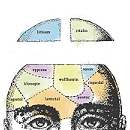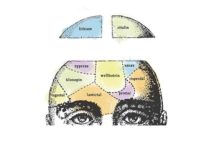In a 2022 meta-analysis, Marc B. Stone and his colleagues declared a startling finding. On average, antidepressants were little better than placebo pills. However, there appeared to be a small subgroup of patients that derived a large benefit. Twenty-five percent of patients in the antidepressant group notably improved in the trial, compared to 10% in the placebo group who did so, and thus it appeared that about 15% of patients experienced a larger benefit that they would have enjoyed if treated with placebo.
This group, according to Stone, was offset by another group of patients who derived less benefit than they would from a placebo, while the majority of patients derived about the same benefit as they would from a fake pill.
Thus, according to Stone, researchers should seek a way to identify the small group of patients who actually do well on the drugs.
In a new study, researchers searched for just that. They reanalyzed the data from the most famous antidepressant study, STAR*D. They looked for the unique “trimodal” distribution (three different groups of people) identified by Stone et al.
The problem: they didn’t find it. The researchers were unable to identify any group of patients who did surprisingly well on antidepressants. Instead, they conclude that the small average benefit over placebo—a clinically meaningless difference that is most likely an enhanced placebo effect—is the best way to understand the benefit of antidepressants.
“The trimodal antidepressant response distribution as reported in Stone et al. could not be replicated using data from the STAR*D trial, an open label, non-industry sponsored real-world antidepressant study,” the researchers write. “Therefore, our results do not support the notion that a subgroup of patients with a large response exists. Instead, these findings support the assumption that the putative subgroups from industry RCTs may be artifacts caused by methodological biases.”
The study authors were Colin Xu, Florian Naudet, Thomas T. Kim, Michael P. Hengartner, Mark A. Horowitz, Irving Kirsch, Joanna Moncrieff, Ed Pigott, Martin Plöderl, many of whom have discussed their work on the Mad in America podcast.
















If there was a large subset of people gaining above average benefits from SSRI, the SSRI studies would show a larger standard deviation in outcomes for the test groups than the control groups.
I’m not aware of any meta study looking into this, but from what I’ve seen this doesn’t seem to be the case.
Report comment